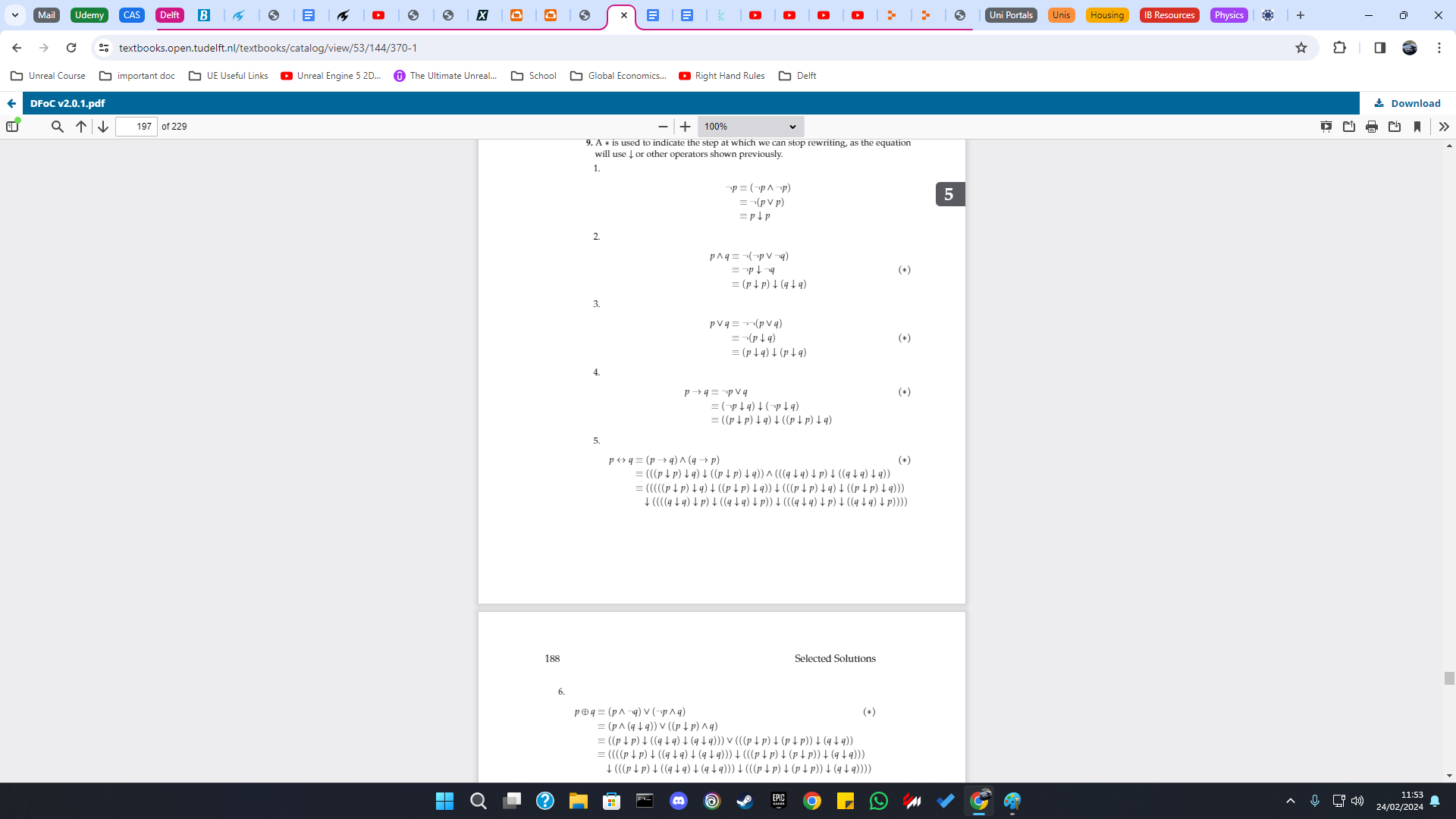Logic And Reasoning
1/37
There's no tags or description
Looks like no tags are added yet.
Name | Mastery | Learn | Test | Matching | Spaced |
|---|
No study sessions yet.
38 Terms
Tautology
when a compound proposition is always true in its truth table
Contradiction
when a compound proposition is always false in its truth table
Contingency
when a compound proposition is neither a tautology or a contradiction
Logically Equivalent (Condition for something to be qualified as such)
Two compound propositions, P and Q, are said to be logically equivalent if and only if the proposition P↔Q is a tautology
Example: ‘P ≡ Q’. For example,(p→q) ≡ (¬p∨q), and p⊕q ≡(p∨q)∧¬(p∧q)
Principle of Explosion
If the premises of a proposition includes a contradiction, any statement can be proven from it
Conditional Statement
If, then. Implication of something. Implication, conditional.
p→q. p is the hypothesis or antecedent, q is the conclusion or consequent.
If p→q is true, then p is sufficient for q.
logically equivalent to ¬p∨q
Converse
q→p is the converse of p→q
Contrapositive
¬q→¬p is called the contrapositive of p→q
Inverse
¬p→¬q is the inverse of p→q
Biconditional Statement
If and only if.
could also be expressed as ‘if p then q, and conversely’ which translates to p↔q is logically equivalent to (p→q)∧(q→p)
can be expressed as (¬p∨q)∧(¬q∨p)
Exclusive Or
Symbol: ⊕
stands for “p or q, but not both”
Order Of Operations (5 symbols)
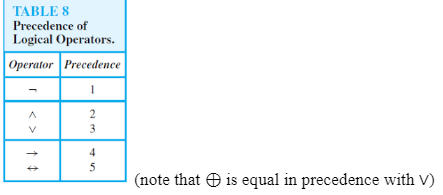
Boolean Algebra Laws (9)

Duality
given any tautology that uses only the operators ∧,∨, and ¬, another tautology can be obtained from it by interchanging ∧ with ∨ and T with F. (The reason why the boolean algebra laws come in pairs)
example: p ∨ ¬p≡ T
becomes: p ∧ ¬p≡ F
Simple Term
either a propositional variable or the negation of a propositional variable Example: p, ¬q
Compound Proposition
A proposition made up of smaller propositions
Example: (¬p∨q)∧(¬q∨p)
Disjunctive Normal Form (DNF)
When a compound proposition is organized in a way that it is a disjunction of conjunctions of simple terms. Each propositional variable occurs at most once in each conjunction and each conjunction occurs at most once in the disjunction.

Disjunction
Or statement. ∨ symbol
Conjunction
And statement. ∧ symbol
Karnaugh Map + Rules
A method to simplify propositions into a minimal sum of products (which is a fancy way of saying DNF form)
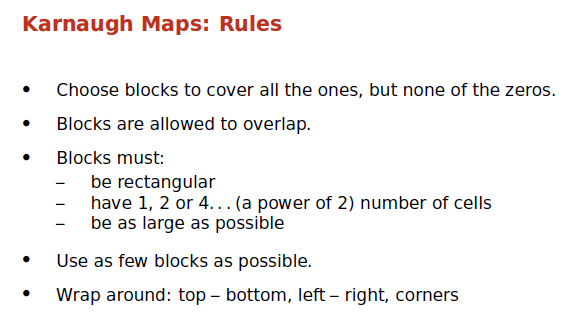
Predicate
a kind of incomplete proposition, which becomes a proposition when it is applied to some entity.
example: In the proposition “the rose is red”, the predicate is “is red”. By itself,‘is red’ is not a proposition
Entity
some specific, identifiable thing to which a predicate can be applied
example: if P means “is red” and a is “the rose”, P is the predicate while a is the entity
One-Place predicate
A predicate that can have one collection of entities assigned to it. (assign one entity to it, but has to be a part of a domain of discourse that works for the predicate)
Example: In the proposition “John loves Mary”, “loves” is a two-place predicate. Besides John and Mary, it could be applied to other pairs of entities (any other 2 people)
Domain of discourse
The set of entities that that can fit in a description.
Example: owns(a,b). domain of discourse of “a” can be humans, and domain of discourse of “b” can be any object.
Propositions
When a predicate is applied to an entity
Quantifiers
Words like all, no, some, and every
Universal Quantifier
∀ symbol means, “for all” of something
Existential Quantifier
∃ symbol means there exists an entity for which…
Open statement
An expression that contains one or more entity variables, which becomes a proposition when entities are substituted for the variables. It has “slots” that need to be filled in.
Example: x owns y (we dont know what x and y are at this point)
Free variables
The variables in an open statement that will have to be substituted by an entity. In ∃x(P(x)), x is bound to the ∃ of P. in P(x), it is free as it is not bound to a quantity.
Tarski’s world
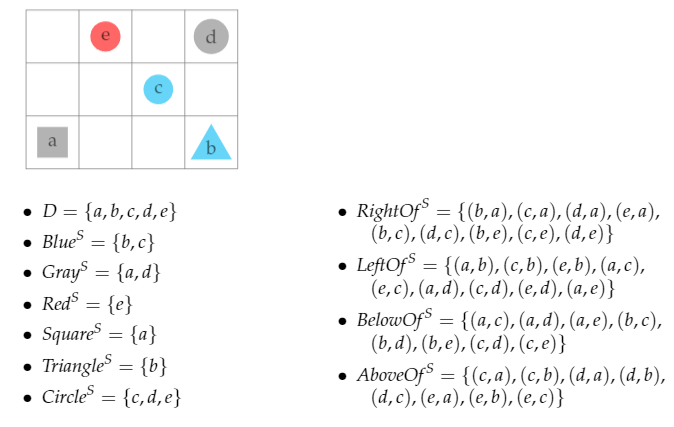
DeMorgan’s Predicate Logic Laws (4)
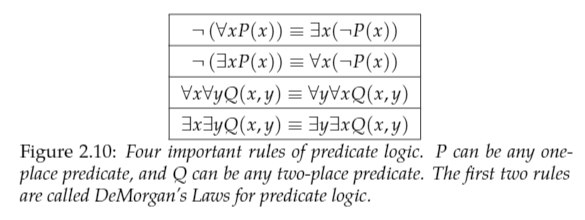
Premise
A proposition that is known to be true or that has been accepted to be true for the sake of the argument
Argument
A claim that a certain conclusion follows from a given set of premises. An argument is valid if the conclusion follows logically from the premises. To disprove it, give a counterexample.
Example: If today is Tuesday, then this is Belgium. Today is Tuesday. Therefore this is Belgium.
Symbol for P→Q is a tautology and that P logically implies Q.
P⇒Q
Laws of Deduction. (3)
Modus Ponens: Statement is: If p is true, then q is true. We know that p is true, so q must be true.
Modus Tollens: Statement is: If p is true, then q is true. We know that q is not true, so p can not be true.
Law of Syllogism: Statement is: If p is true, then q is true. We know that if q is true, r is true. So, if p is true then r is also true.
How to specify there is only one of something in predicate logic. (There is only one detective that is not trustworthy)

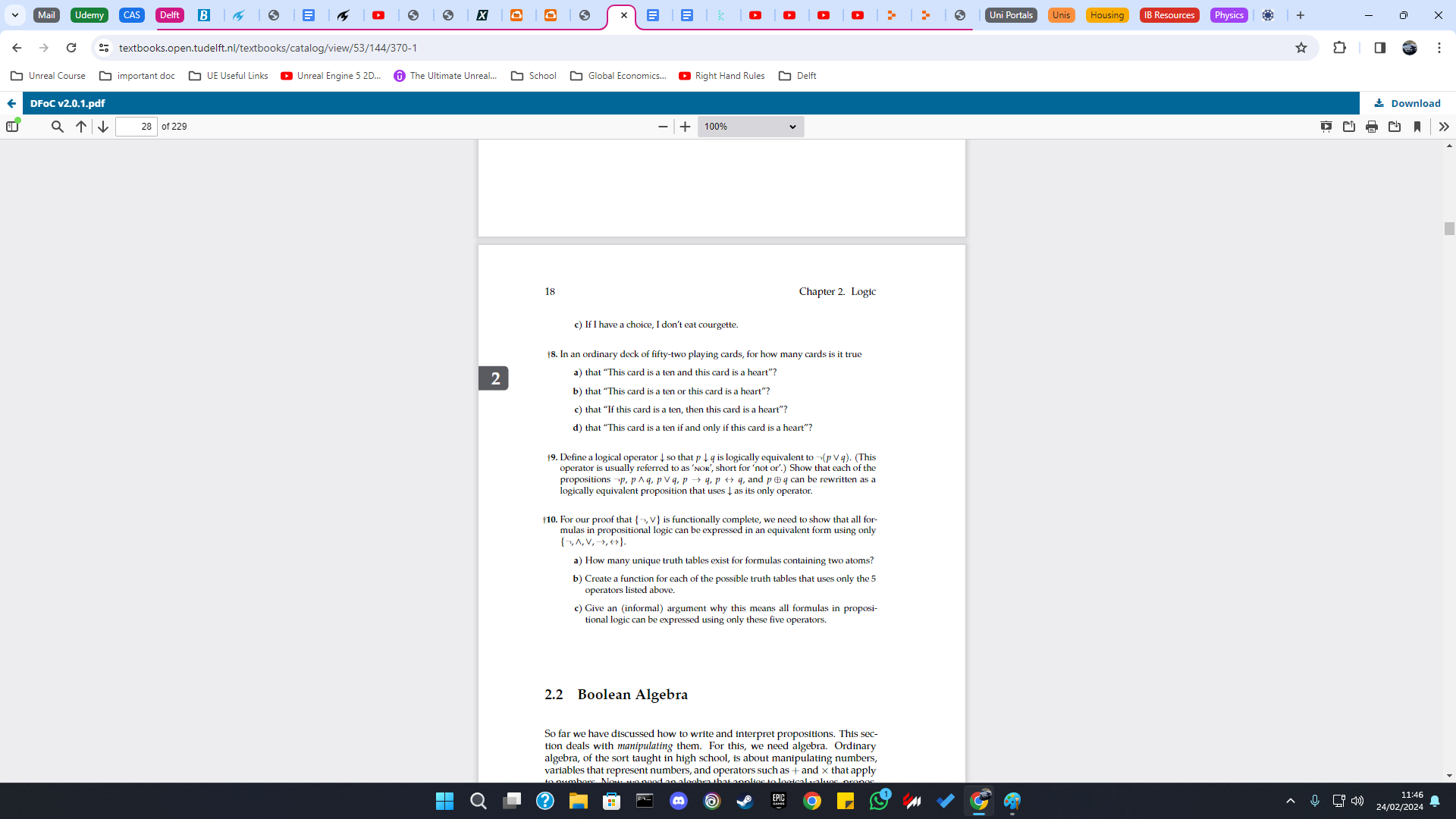
2.1 Hard Questions
8.a: 1 card (ten of hearts), 8.b: 16 cards, 8.c: Only 3 cards that dont satisfy so 49 do, 8.d: 37 cards (12 hearts that are not a 10, 3 cards that are 10s but not a heart do not satisfy), 10: (2²)^n (n=#atoms)
